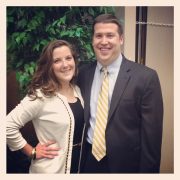Scripting Our Prophecies

Scripting Our Prophecies
A Sermon for Sardis Baptist Church
Bob Stillerman
2 Peter 1:16-21
2-23-2020
Scripting Our Prophecies 2 Peter 1.16-21 2-23-2020
We’ve spent a great deal of time in Matthew’s gospel to begin our year. The author of Matthew tells an account of the life of Jesus from a marginalized perspective. In the late first century, Matthew’s community found itself on the fringes of mainstream Judaism, because this family of faith held tight to a belief in Jesus as Messiah, or God’s anointed. Matthew’s gospel seeks to prove Jesus’ Judaism, making him a modern-day Moses, who has come to fulfil Torah. The stories in this gospel have a two-fold purpose: 1) to adequately describe the divine nature and purpose of Jesus’ life and ministry and 2) to describe the kind of world or kingdom God will establish on Earth.
In Matthew’s account, the story of the transfiguration is essential in revealing the authority of Jesus to his three disciples, James, John, and Peter, and it’s a foretaste of resurrection. High on a mountain, Jesus is suddenly joined by Moses and Elijah (the representatives of law and prophecy), his robe turns a dazzling white, and enveloped by a bright cloud, God says, “This is my child. I’m proud of him. Make sure you listen to him.” The disciples witness a glimpse of what is, and what will be, and such a glimpse is intended to steward them; to help them faith what will come next.
Fast forward to the end of the second century. It’s still a post-resurrection world like in Matthew’s time, but it’s also a post-resurrection world in the text. The author of Second Peter, one who claims to be the Apostle Peter, but is more than likely writing in the tradition, offers a farewell address to his community of believers. But unlike Matthew’s author, who was working to establish the validity of Jesus’ anointed status, Second Peter’s author is working to establish the validity of Jesus’ second coming or judgement. In other words, the doubters are now less concerned about the authority of Jesus, and more concerned about why it’s taken him so long to come back. For, certainly, at some point, once all has been restored, the present is gonna morph into the future, and the righteous are gonna be rewarded, and the unrighteous are gonna be found wanting, and Jesus is gonna preside over it all. But if it hasn’t happened yet, is it really ever gonna happen?
To the doubters, the author of our text says:
I’m not telling you idle stories. This isn’t some tall tale. This wasn’t written from the whims of the Emperor Cult. This is truth. I saw a transfiguration with my own eyes, and that transfiguration has profoundly shaped my understanding of the world. The man we knew, Jesus, was of God. And we heard God tell us to listen to him. And we watched all of God’s majesty fall upon our friend. And yes, we were terrified, on that mountain, and in an upper room where we hid while he endured a cross, and on the shore when he greeted us. But that terror, that awe, that astonishment turned to love, turned to grace, turned to discipleship, real discipleship, and it turned to witness. We know what we saw, and we don’t need the concept of human time to tell us otherwise.
What we saw was accurate. This is a source you can trust. This isn’t fake news.
I believe Second Peter’s author used the transfiguration account as a personal light. For the author, this was a bona fide story that illumined the life of Jesus – this was the detail that brought clarity and purpose. This was the memory, maybe not at the exact moment of its occurrence or telling, but the memory that unveiled truth. Why is the author confident of what will come? Because long ago, on a mountain with his friends, and in the presence of Jesus and the fathers of our faith, God told him it was so. This story is the detail that turns a pitiful candle into a powerful dawn.
The author closes with a word of advice, or maybe it’s a warning, or maybe it’s both. People don’t write prophecies. People don’t come up with God’s ideas. Rather, it’s the opposite. Endowed by, empowered by, filled with the Holy Spirit, God speaks prophecies through the tongues of women and men. Douglas John Hall phrases it this way: people don’t imagine, invent, or own God’s truth, and wave it like they’ve got a hold on it. Instead, God’s truth gets a hold on them, and that truth is shared in prophecy.
So…that’s a lot to unpack!
For starters, there’s the fact that our author, who lived more than one hundred years after the death of the man he claims to be, is telling us about the authenticity of a first-hand witness that isn’t a first-hand witness. And the author does so with a straight face, all the while denouncing the faith claims of his/her critics, who cling to similar third and fourth-hand accounts. Believe my third-hand truth more than the other guy’s.
And our setting is a strange one for this text. You won’t often hear people at Sardis say much about a second coming, or a rapture, or a final judgment day. For most of us, God’s kingdom or God’s kin-dom is more existential, a gradual inbreaking of God’s realm in the form of consistent discipleship; millions upon millions up millions of little stories of resurrection that make God’s world realized in the present; a kingdom that is always but coming.
And of course, rather than being two centuries removed from the life of Jesus, we find ourselves two millennia removed from the life of Jesus, and in so many instances tradition has posed as indisputable, historical fact.
And maybe, like me, you wonder, “What am I supposed to do with this text?”
Here’s where I came out. I think that long ago, something happened in the life of Jesus that was transformative beyond my comprehension. It changed and illumined the world, and me and you, too! I am not interested in litigating the historicity, or the science, or the logic, of the transfiguration, let alone the resurrection. And I don’t plan on spending any money on a clock that can translate rapture time. I just don’t think that’s a worthwhile pursuit.
Instead, I choose to think about the transfiguration and resurrection moments in my own life. Sure, they have fewer sensational details, and I doubt those details will be stilled in the words of timeless literature. But there are moments where I have experienced a wonderful combination of transfiguration (reminders to listen to God in my presence), and resurrection (God breathing new life into something I couldn’t imagine was possible), and allowing those experiences/memories to inform a future a full of God’s presence and God’s purpose.
On my wedding day, I stood next to one who dazzled in white, and I heard sacred words reminding me to listen to a God that would guide my partner and me, and together, we dream of a future, one that’s not yet fully realized, but instead emerges, matures, becomes better in every moment.
When my children were born, I held two girls wrapped in dazzling white, underneath a bright cloud (well more like a fluorescent light). And now, I hear God being well-pleased with His child in a different way, a parental way, and I am awed by the depth of such a love. And I am reminded that just as I’ll work to ensure a future for my children, God works to do the same on our behalf.
Each All Saints Sunday, there’s a moment when I am overcome with grief, remembering those saints we’ve lost. And yet somehow, each year, that momentary grief is met with expectant hope, especially when we sing For All the Saints, and we round the turn, nailing all of our quarter and half notes, proclaiming “and hosts are brave again, and arms are strong, Alleluia, Alleluia.”
Or during Easter Sunrise services, the chill of March and April mornings bites at my fingers – it shouldn’t be SO cold!!! And in the stubborn darkness of early morning, it seems impossible to believe that the sun will peer through all that thick night. And yet it does!!! And a bright sun reminds us that God resurrects our future just as surely as the morning star resurrects a new day.
Not every text, not every prophecy will resonate with us in equal measure. The scriptures reflect a depth and breadth of experiences with God, and interpretations of those experiences. Maybe this text, steeped in transfiguration, and resurrection, and second coming is right up your alley. Maybe it isn’t. I think it’s fine either way.
I would encourage you to think less about how you want to validate or invalidate scriptures and prophecies, and think more about how you might use scriptures and prophecies, both the comfortable and the uncomfortable, to illumine your own moments of transfiguration, resurrection, and future.
Because here’s the truth: God transfigures, y’all. God reminds us to listen. And God resurrects, y’all. God makes new life out of tired seasons. And God’s future, Christ’s return is certain, no matter how foggy we are on the details or the timing.
In the coming Lenten season, as we fumble with dim candles in darkness, may we experience spirit-filled prophecies that allow the morning star, the light-bearer, to arise within our hearts. And may we experience God’s transfiguration, resurrection, and future for ourselves.
May it be so. And may it be soon!
Amen.
Recent Sermons
Palm Sunday 2025
April 13, 2025
Our Choices
April 06, 2025
Salvation Realized
March 30, 2025


